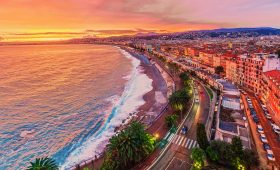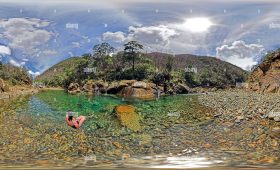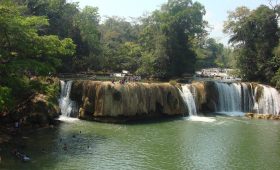Exploring Lake Bangweulu in Zambia
Location and Geography
Lake Bangweulu is located in northern Zambia and is a significant freshwater ecosystem. It spans approximately 3,000 square kilometers and is surrounded by expansive floodplains, swamps, and marshes. This unique geography supports a rich diversity of plant and animal life.
Flora and Fauna
Lake Bangweulu is renowned for its biodiversity. Birdwatchers are particularly drawn to the area to see the rare shoebill stork. The lake’s wetlands are a sanctuary for numerous bird species, making it a prime destination for avian enthusiasts. The lake also supports a variety of fish species, which are crucial to the local economy. Fishing is a major activity here, with traditional techniques still in use by local communities.
The wetlands are home to unique plant species, including papyrus reeds and water lilies, which contribute to the area’s natural beauty. This makes Lake Bangweulu a fascinating destination for nature lovers.
Best Time to Visit
For wildlife viewing, the dry season from May to October is ideal. During this period, water levels are lower, providing better access to the lake and its surroundings. The weather is also more comfortable, with cooler temperatures and minimal rainfall. However, if birdwatching is your primary interest, consider visiting during the rainy season from November to April, when the increased water levels attract a wider variety of bird species.
How to Get There
Reaching Lake Bangweulu requires some planning. The nearest major city is Kasama, where you can fly in and then hire a local guide or join a tour to the lake. Alternatively, you can embark on a road trip, but be prepared for challenging roads that may require off-road driving skills.
Local Transportation
Once at Lake Bangweulu, exploring by boat or canoe is recommended. These traditional modes of transport allow you to navigate the intricate waterways and observe wildlife up close. For shorter distances, bicycles or walking are viable options. The local communities are welcoming, so feel free to engage with them for recommendations.
Accommodation
While the area is remote, there are accommodation options ranging from rustic eco-lodges to guesthouses. Facilities may be basic, but the hospitality and stunning natural surroundings compensate for it. Embrace the simplicity and enjoy the serene environment.
Historical Context
Lake Bangweulu has a rich history. It was first seen by a European, the explorer David Livingstone, in 1868. His expeditions in the area were significant, although he faced challenges navigating the swamps. The lake was partially surveyed in 1883 by Victor Giraud and circumnavigated by Poulett Weatherley in 1896. The region’s history is also marked by early Christian missions established in the early 1900s.
Summary
- Lake Bangweulu is a major wetland in northern Zambia, known for its biodiversity.
- The lake is a haven for birdwatchers, especially those seeking the rare shoebill stork.
- Fishing is a key activity, supporting local communities.
- Visit during the dry season (May to October) for wildlife or the rainy season (November to April) for birdwatching.
- Access the lake via Kasama, with options for guided tours or self-driven road trips.
- Transportation includes boats, canoes, bicycles, and walking.
- Accommodation ranges from eco-lodges to guesthouses, offering basic amenities.
Lake Bangweulu offers a unique travel experience, combining natural beauty with cultural and historical significance. Plan your visit to explore this remarkable destination.




